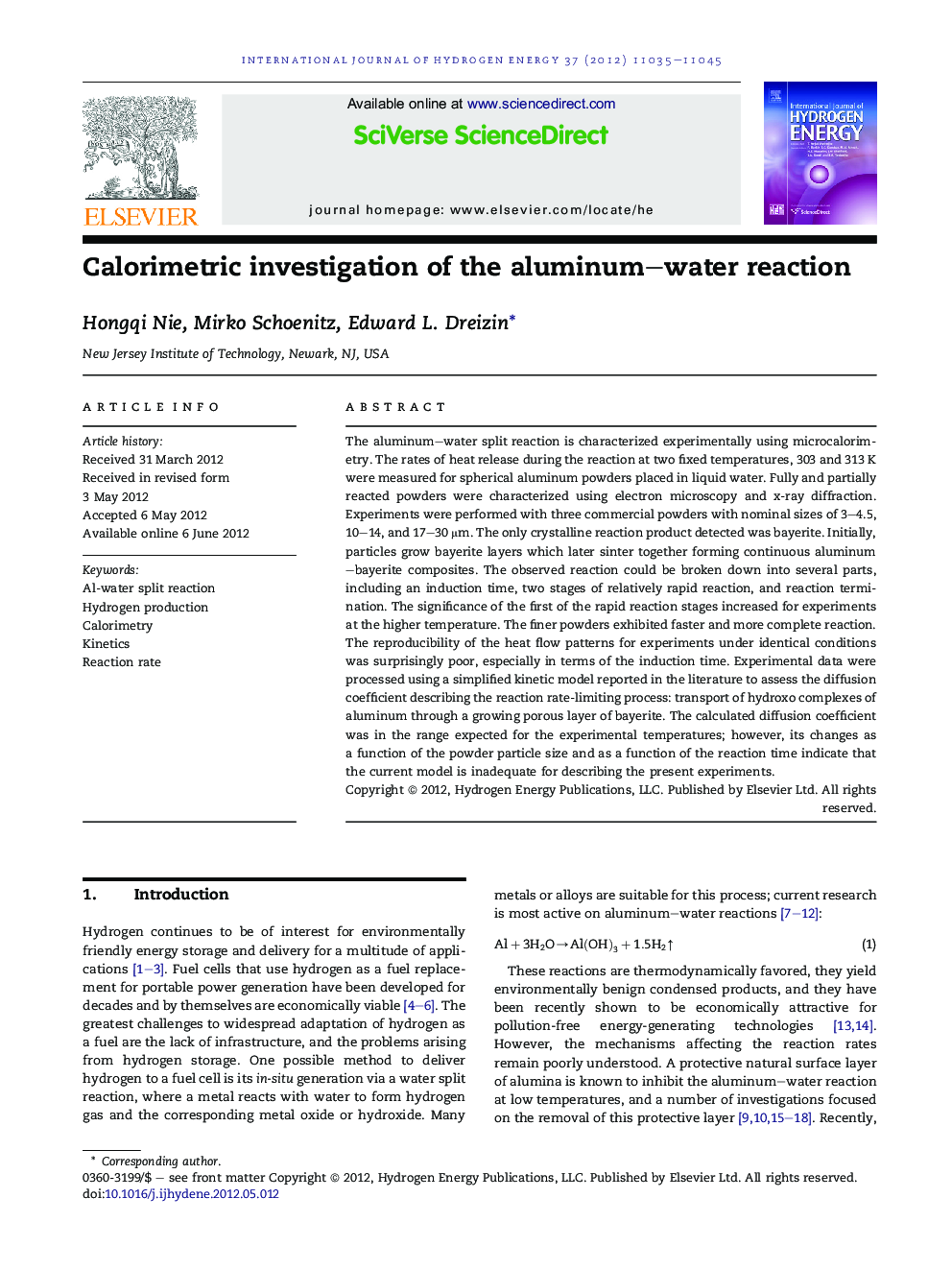| Article ID | Journal | Published Year | Pages | File Type |
|---|---|---|---|---|
| 1276268 | International Journal of Hydrogen Energy | 2012 | 11 Pages |
The aluminum–water split reaction is characterized experimentally using microcalorimetry. The rates of heat release during the reaction at two fixed temperatures, 303 and 313 K were measured for spherical aluminum powders placed in liquid water. Fully and partially reacted powders were characterized using electron microscopy and x-ray diffraction. Experiments were performed with three commercial powders with nominal sizes of 3–4.5, 10–14, and 17–30 μm. The only crystalline reaction product detected was bayerite. Initially, particles grow bayerite layers which later sinter together forming continuous aluminum–bayerite composites. The observed reaction could be broken down into several parts, including an induction time, two stages of relatively rapid reaction, and reaction termination. The significance of the first of the rapid reaction stages increased for experiments at the higher temperature. The finer powders exhibited faster and more complete reaction. The reproducibility of the heat flow patterns for experiments under identical conditions was surprisingly poor, especially in terms of the induction time. Experimental data were processed using a simplified kinetic model reported in the literature to assess the diffusion coefficient describing the reaction rate-limiting process: transport of hydroxo complexes of aluminum through a growing porous layer of bayerite. The calculated diffusion coefficient was in the range expected for the experimental temperatures; however, its changes as a function of the powder particle size and as a function of the reaction time indicate that the current model is inadequate for describing the present experiments.
► The aluminum–water split reaction is characterized using microcalorimetry. ► The reaction breaks down into several distinct stages. ► Reaction stages are affected by temperature and particle size. ► Data processed to identify diffusion coefficients. ► Need for an improved reaction model identified.
